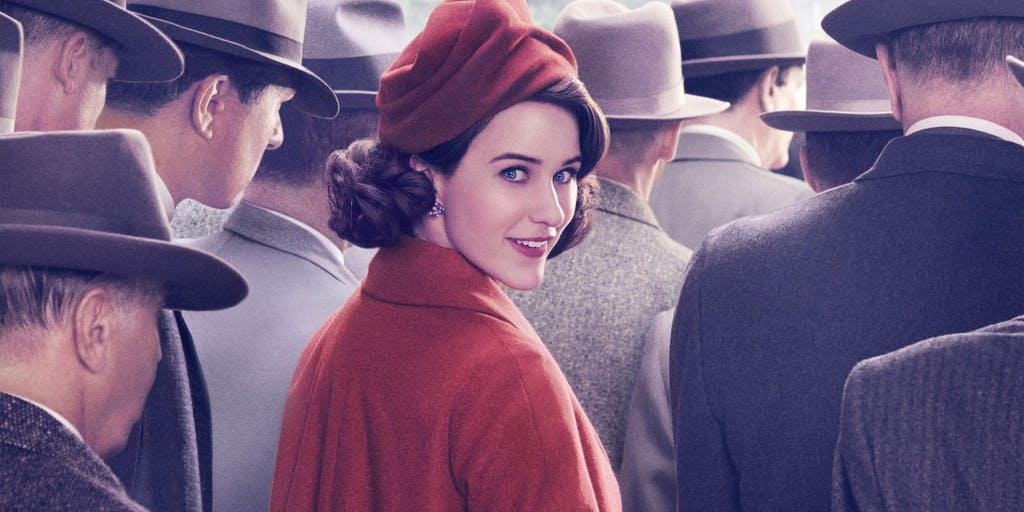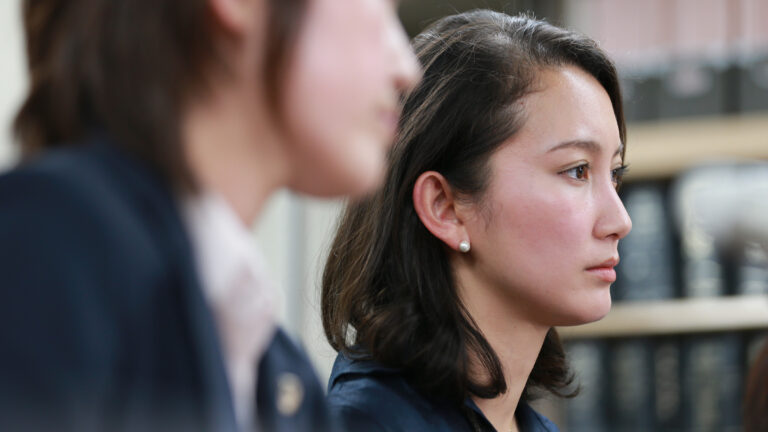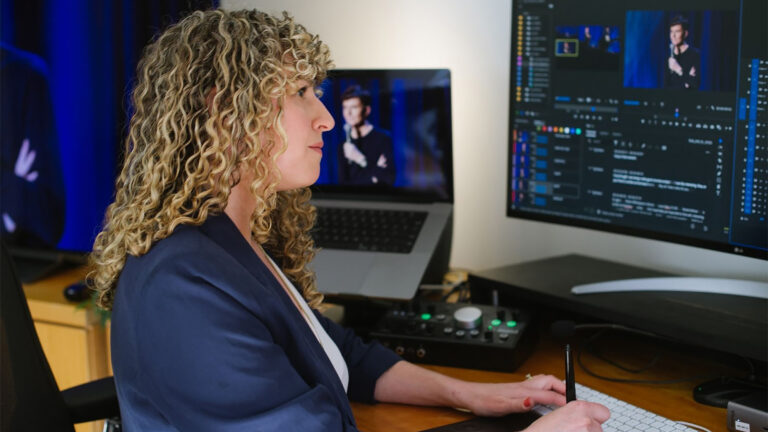It’s hard not to get whiplash watching The Marvelous Mrs. Maisel. The velocity of its dialogue and the comedic prowess of its diamond-tipped protagonist, are a delightful struggle to keep up with. And you’d expect nothing less from Amy Sherman-Palladino and Dan Palladino, the minds behind the classic Gilmore Girls. A creative partnership like that requires editors who can keep pace with both them and their material. On The Marvelous Mrs. Maisel, that honor falls to veteran editors Kate Sanford and Tim Streeto.
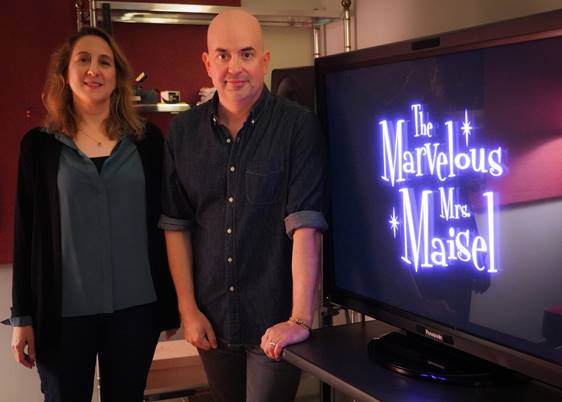
We spoke with Sanford and Streeto about how they manage the hectic pacing of Maisel, as well as the editing of the show’s many accomplished long shots and structuring of the tricky stand-up comedy sequences.
A marvelous pairing and contending with deadlines
Sanford (The Wire) and Streeto (The Squid and the Whale) have worked together since 2010, when they began a five-season collaboration on Boardwalk Empire that was followed by a stint on the short-lived Vinyl.
It was after working on Vinyl that their production manager, Dhana Gilbert, introduced them to two showrunners looking for editors. Amy and Dan Palladino. Shortly after, Sanford and Streeto began work on the first season of The Marvelous Mrs. Maisel.
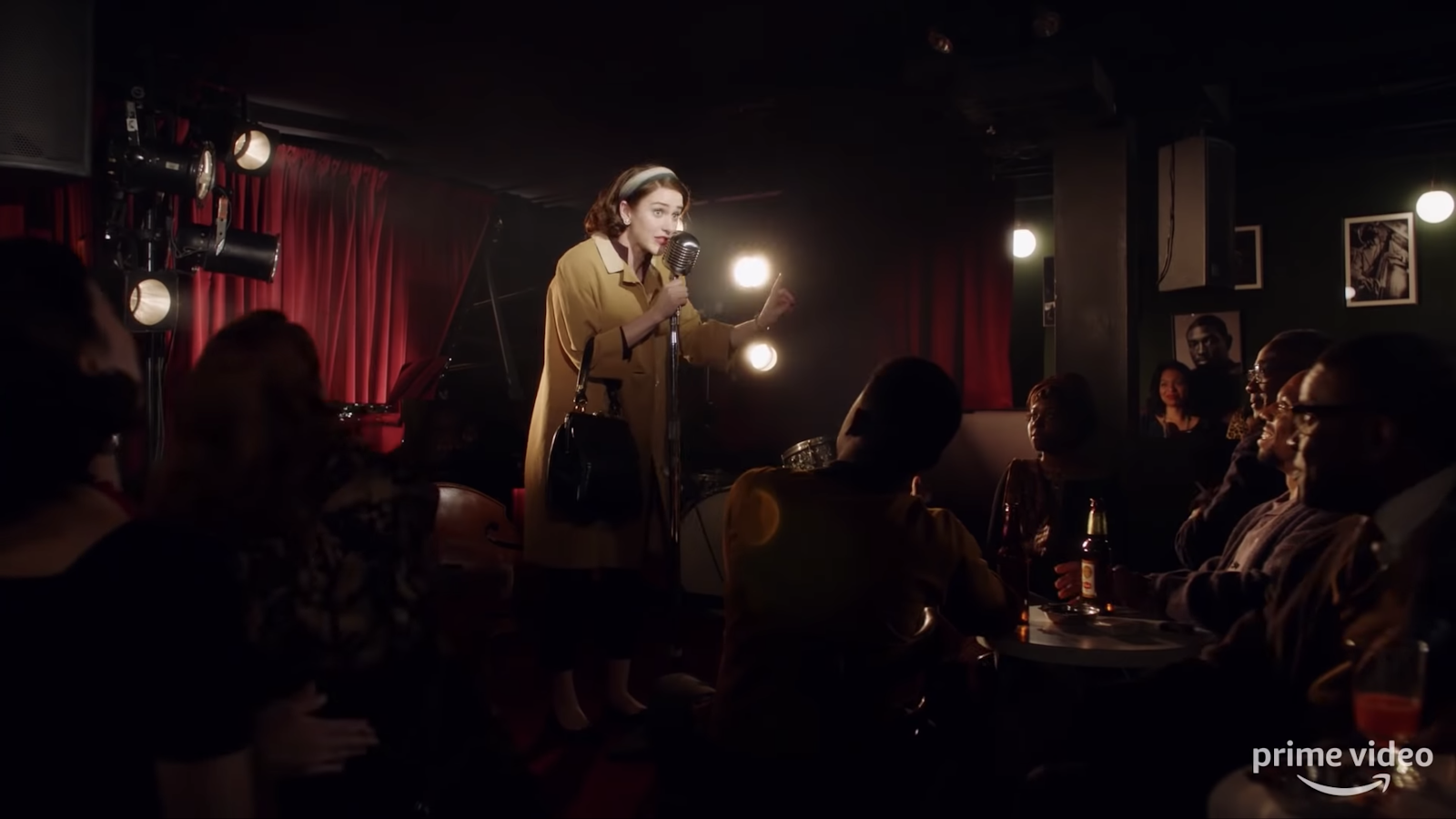
A year and eight Emmys later, Sanford and Streeto returned for Season Two. Production started in March 2018 with a three-week shoot in Paris for scenes involving the Weissman family’s visit to La Ville-Lumiere. Production then returned to New York in mid-April to shoot through to the end of August 2018, followed by post-production, which ran till October.
The show is shot on 3.2K ProRes 4444, edited offline on Avid Media Composer 8.6.5 using DNx36, then upscaled and finished at 4K from the source. Sanford and Streeto edit out of Steiner Studios in Brooklyn, using 16×9 monitors, an NTSC display, and a 50” plasma client screen all hooked up to a Mackie mixing board and Avid Media Composer 8.6.5. As for sound: “We have our rooms set up so that we can throw our sound to an alternate set of speakers that are on either side of the client monitor when we’re screening,” Sanford says.
Their editing team is tight-knit and very efficient. “Our picture team includes two assistants: Zana Bochar and Andy Pang, and a large in-house VFX crew led by Lesley Robson-Foster. We have a wonderful music editor, Annette Kudrak, and our sound crew is led by sound editor and mixer Ron Bochar,” says Sanford.
Teleplays on Maisel typically run near 80 pages, with eight to nine pages being shot per day during production, and a typical episode taking 10 to 14 days to shoot. This pace is typical for the Palladinos, who have always been known for the speed of their shows, and yields a lot of daily footage for the editors to handle. But they’ve got it covered. “We have a fair amount of lead time on Maisel, and have time to do our director’s cut and our producer’s cut. Then the dailies for the next one start coming in, and we’re cutting that,” says Sanford.
Not that there aren’t pressures, she goes on to explain. “We have to keep up and lock things in a timely fashion so that sound can start, the mixing can start, and color correct. And all of the other finishing processes can be happening simultaneously, back into a deadline of whenever all episodes are released at once,” she says, but adds “The deadline we have to back into doesn’t curtail our creative process at all.”
Contending with dailies and oners
Sanford and Streeto’s creative process begins with the dailies, which they watch to completion, time permitting. This can sometimes be challenging, partly because they’re two editors working on a one-hour show, when three is more common. But they have the trust of their producers, and the deadlines are generous enough for them to catch up.
When Sanford watches dailies, she likes to do so in order, because she wants to see the progression of the scene. On rare occasions, she’ll watch them in reverse order, but only when she’s facing a strict deadline. Otherwise: “I watch for the development of the camera movement and the performances,” she says.
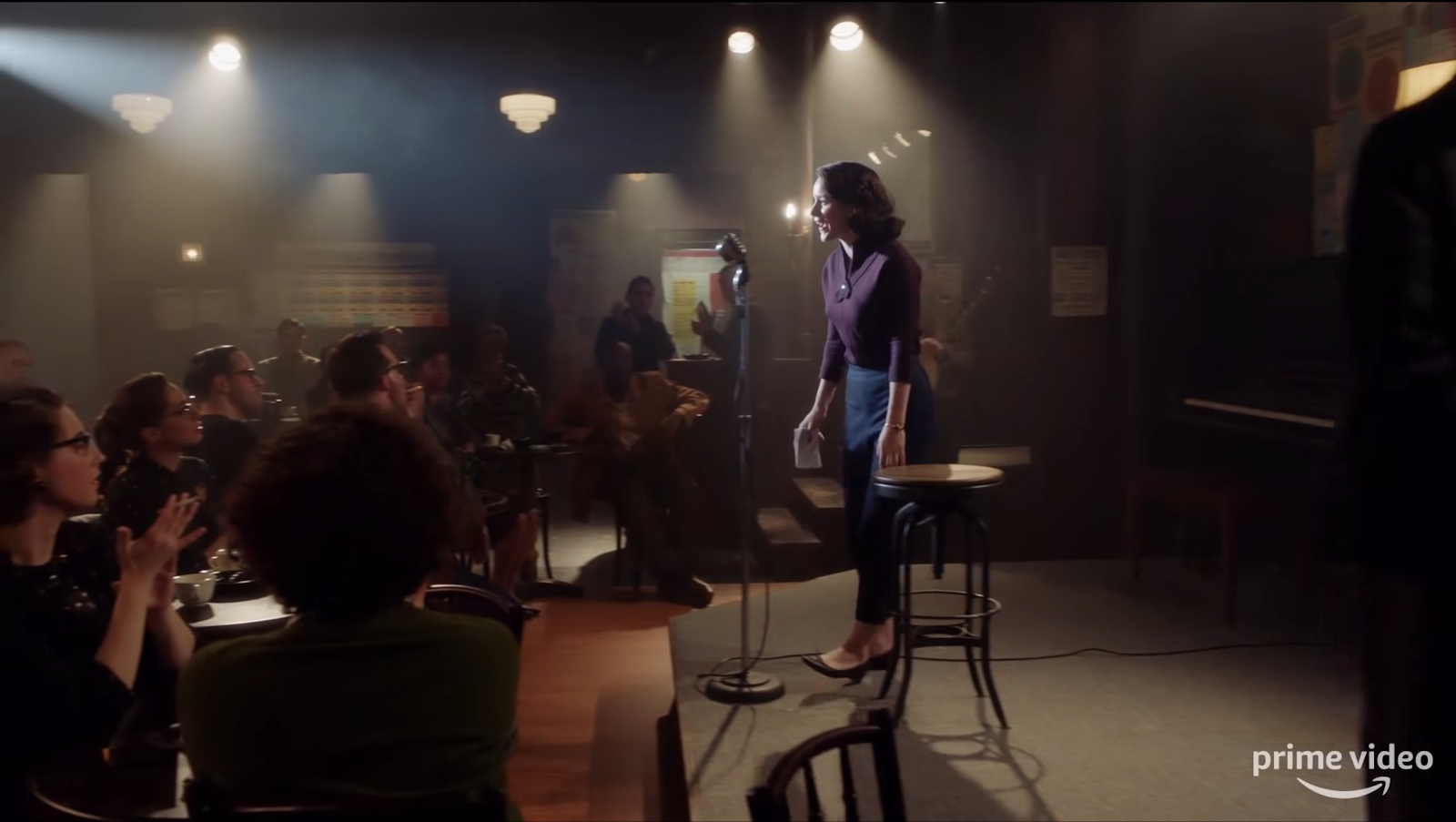
For the latter, she believes that editors are thankful for digital dailies. “You hear a lot of the direction that happens as they reset within a take. A lot of editors are experiencing this, where you get to hear the direction a little bit, which, at least for me, has made assembling much easier,” she says.
Watching the dailies in order is especially important to Sanford to track progression due to the specificity of shots–especially “oners” (continuous shots also called long takes or one-shots). “Many of the scenes that they shoot are done with minimal camera setups. But those setups are very heavily staged,” Streeto says. “There is a lot of steady cams so, in a way, the earlier takes are sometimes a rehearsal for what develops into beautifully invisible, elaborate blocking,” Sanford explains further.

Camera movement and the performances also combine. Santo says “The first thing I always look for in oners is the performance on different lines because, a lot of times, lines get lost when the camera movement is covering a lot of ground. I also look for how the performance is changed over the course of those oners.” Sanford adds that speed is another element they keep their eye out for on selects. “Sometimes if I have a choice between two things that look very similar, and I don’t know, I’m not sure which one to go with, I’ll just go with the faster one,” she explains.
As for scenes that aren’t oners, Streeto has a preferred method. “With a master, mediums, and close ups, my usual approach is that I cut multiple versions of the scene, and the first version is usually all in close-ups,” he says. “It’s just a way to narrow down the decision-making process for me. If I don’t know how to incorporate the master, or if I don’t want to start with the master and use it in the middle, I start with the close ups and feel my way through it. Then I’ve got a version that’s for whatever portion of the scene that I’m going to use the close-ups for. I know that’s where the strengths are and then, depending on how much time I have, I’ll cut as many versions of that.”
Collaborating as co-editors and with the showrunners
Streeto and Sanford collaborate as co-editors by alternating episodes of a season, but their separate work is guided by a shared purpose. “Our approach is similar in that we’re really trying to make things grounded and get at the truth of things,” Sanford says. “We’re trying to get to the reality of the character.”

That similar approach builds trust, which especially helps when there is rare overlap in their work. For example, because Sanford started working on Maisel Season 2 first, she was responsible for the Paris footage that would be used in the first two episodes. “She cut all of that stuff, even what was going to be in my episode. Once I came on, she gave it to me packaged,” Streeto says.
Streeto trusted her work, as she trusted him with hers. “I don’t think we have a tremendous amount of ego invested in it. If Tim ended up changing everything, that is totally fine too,” Sanford says, before adding “Once you start working with a showrunner, everything is subject to change.”
The Palladinos’ top tier status means that time for the editors to collaborate with the showrunners is a highly-prized commodity. “They’re running a writer’s room, they’re directing, they’re prepping, they’re editing. In the first half of the season, their time is very limited. We often wouldn’t get them until the end of the day,” says Streeto. The back half of the season would usually be easier because their load was lighter. When the Palladinos were busy, the editors were helped by finding one thing easier in the second season. “We knew Amy and Dan’s preferences a little bit better,” says Sanford. “We kind of know what their style is, and what their taste is now,” adds Streeto.
For example, song selections are an instrumental part of Maisel, and the editors always wait on the Palladinos before making those cuts. “Some of those things are scripted, and some of them aren’t. But they usually have something in mind, so I wouldn’t always temp. I might wait for them instead to come into editing and tell us what they wanted to try,” Sanford says. Another example is the Palladinos’ style and preferences regarding cutting. “They like to stay in the master a little bit longer than before cutting to coverage. So, I would not cut out of the designed camera move,” Sanford says.
Knowing Amy Sherman-Palladino better means that the timing of master-to-coverage can be gleaned by how scenes were shot, especially with a oner. “Following the coverage gives me a huge clue,” says Sanford. Take an early scene in the first episode of the second season where Midge is followed by the camera as she beelines through her apartment towards her children. She’s worried they are hurt and looking for her dad, who eventually comes into the room in an equal fuss. Then the camera’s tracking stops. “It’s not until they both actually physically stop their movement that we have an opportunity to go to coverage,” Sanford says. “I could’ve stayed in the two-shot, because it can continue. But once they stopped, that’s the opportunity to go and start ping-ponging back and forth, and then their movement takes us to another spot in the apartment where coverage will continue.”
The structure and sound of comedy
A show about a stand-up comedian like Midge Maisel is going to naturally feature comedy club appearances, and these can be a challenge. “Her stand up [scenes are] the hardest,” admits Sanford. But they do have landmarks to guide them. “We’re building those just based around Rachel’s performance and how the audience is responding in real-time,” says Streeto.
There’s also a common structure to Midge’s performances. “What happens in so many of her scenes is that she is prepared for one thing, and then, right before she goes on stage, something happens in her personal life, or something like getting knocked back a time slot and she can’t get it together. Then she’s thrown up on stage and the beauty of the show is that’s often when her best stuff comes out,” Streeto explains. “But her initial performance is very off, and the audience isn’t sure whether they should be laughing.”

That progression – stumble to success – has to be paced and built up, and the building blocks are two types of footage. “[The Palladinos] always get takes where the audience is really responding to her. Then when they usually get in tighter for coverage, it’s clean, so we don’t have the laughter,” says Streeto. Sound is very important in those scenes, because the degree of audience laughter–sputtering to loud guffaws–helps build the art of Midge’s performance through audio and audience cutaways.
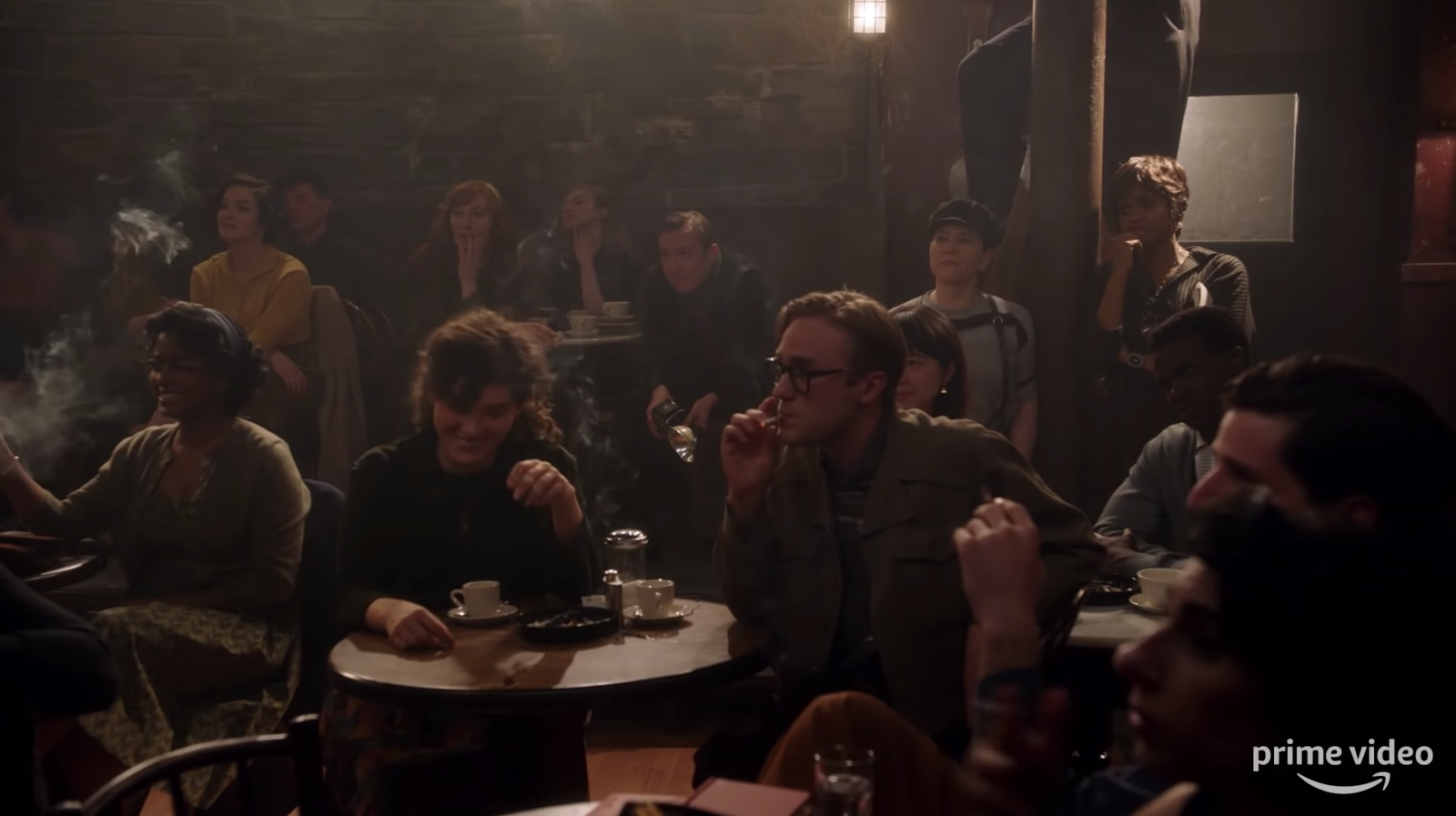
That careful balancing act happens elsewhere, too. “It’s very carefully calibrated sound effects work,” says Streeto. “Another challenge of Season 2 was episodes 4 and 5, which both have scenes where there’s a static shot where the camera’s not moving at all for three minutes and the audio had to provide all the chaos that the camera movement and the character’s movement usually provides,” says Sanford. “We had to do it all with sound, so the sound was scripted. It was people yelling at each other and moving back and forth, and then we also bring in another layer of chaos with off-camera callouts.”
Those challenges, however, are always worth it for Streeto and Sanford, and reflective of the welcome creative and narrative broadening of the second season of Maisel. “They took us to Paris, they took us to the Catskills. There was some really exciting, fresh new stuff where the characters were going on new journeys. It didn’t just feel like ‘And here’s more of the same of what you loved last year.’ They really had such a creative and inspired second season,” says Streeto. “We feel like we’re making ten little movies with auteur directors,” says Sanford.

